The taskbar in Windows 11 is an essential tool for accessing applications, managing open windows, and navigating the system. So, when icons suddenly disappear from the taskbar, it can disrupt your workflow and productivity. This issue can arise due to various reasons, such as corrupted system files, conflicts with services, or problems with the icon cache. Fortunately, there are several ways to resolve this problem.
1. Delete the Iris service
One potential cause of missing taskbar icons is the Iris service, which is part of Windows Spotlight and manages features like Microsoft Ads and the Bing wallpaper. Removing and recreating this service can help restore your taskbar icons.
Step 1: Open the Start menu and type cmd or command prompt. Right-click on 'Command Prompt' and select 'Run as administrator' to launch it with administrative privileges.
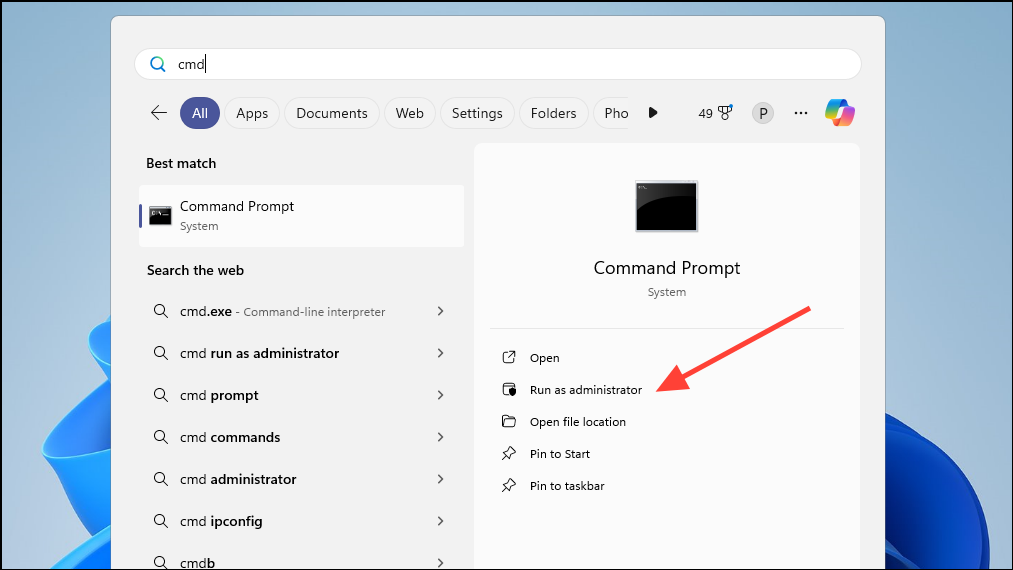
Step 2: In the command prompt window, type the following command and press Enter:
reg delete HKCU\SOFTWARE\Microsoft\Windows\CurrentVersion\IrisService /f && shutdown -r -t 0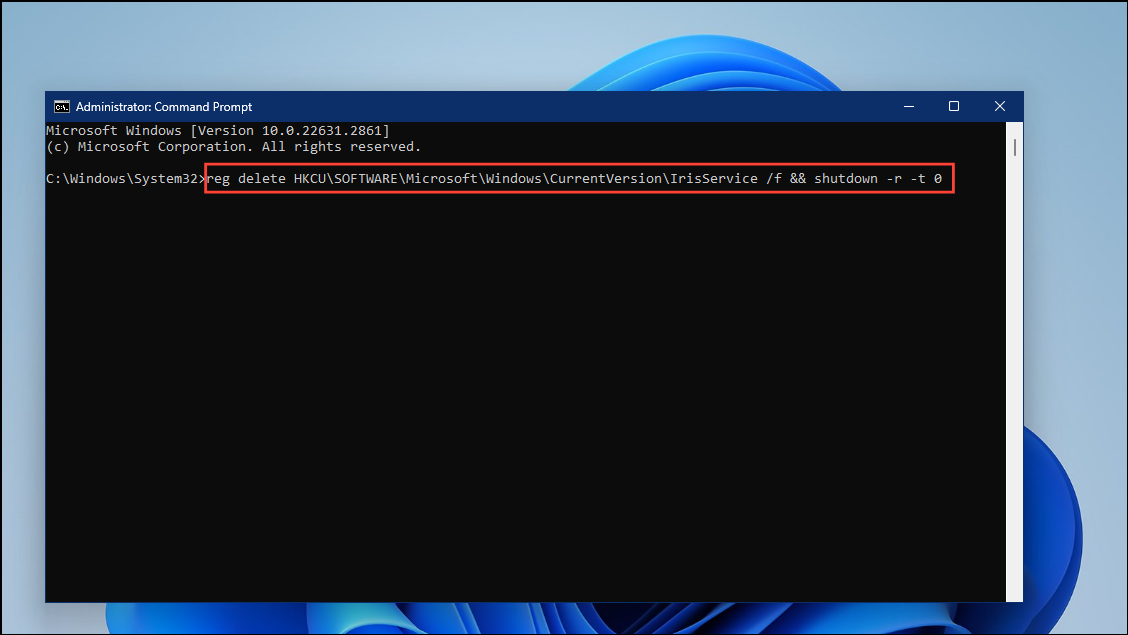
Step 3: Your computer will delete the Iris service and automatically restart. After rebooting, check if the taskbar icons have reappeared.
2. Restart Windows Explorer
Restarting Windows Explorer is a simple yet effective way to resolve missing taskbar icons. It refreshes the user interface and can restore any missing elements.
Step 1: Right-click on the taskbar and select 'Task Manager'. Alternatively, press Ctrl + Shift + Esc to open it directly.
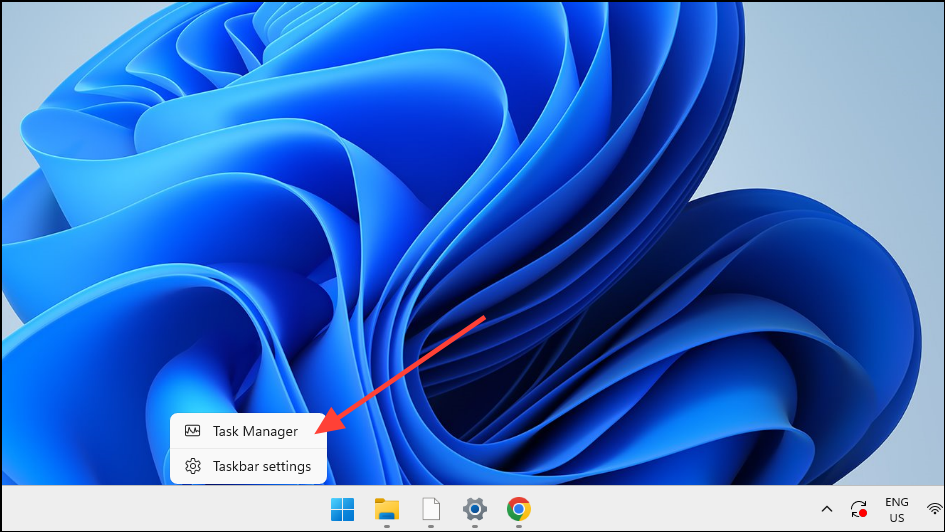
Step 2: In the Task Manager, locate 'Windows Explorer' under the 'Processes' tab. Right-click on it and choose 'Restart'.
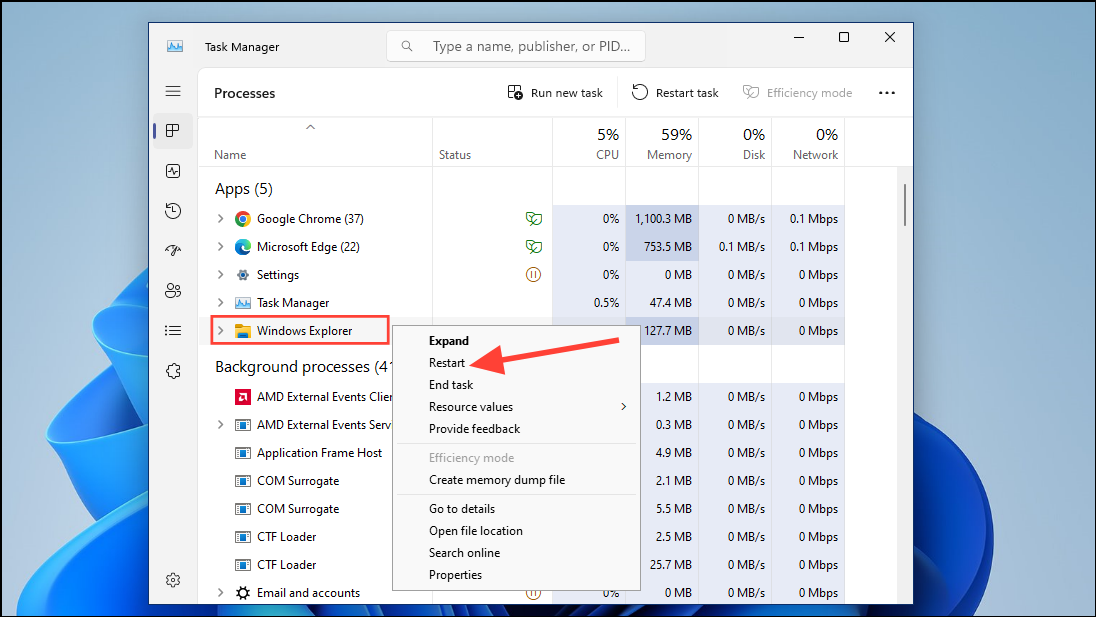
Step 3: The screen may flicker as Windows Explorer restarts. Once it's back up, check if your taskbar icons have returned.
3. Run SFC and DISM scans
Corrupted system files can cause various issues, including missing taskbar icons. Running System File Checker (SFC) and Deployment Image Servicing and Management (DISM) scans can detect and repair these corrupt files.
Step 1: Open the Start menu, type cmd, right-click on 'Command Prompt', and select 'Run as administrator'.

Step 2: In the command prompt window, type sfc /scannow and press Enter. Wait for the scan to complete.

Step 3: After the SFC scan, type DISM /Online /Cleanup-Image /CheckHealth and press Enter.

Step 4: Next, type DISM /Online /Cleanup-Image /ScanHealth and press Enter.
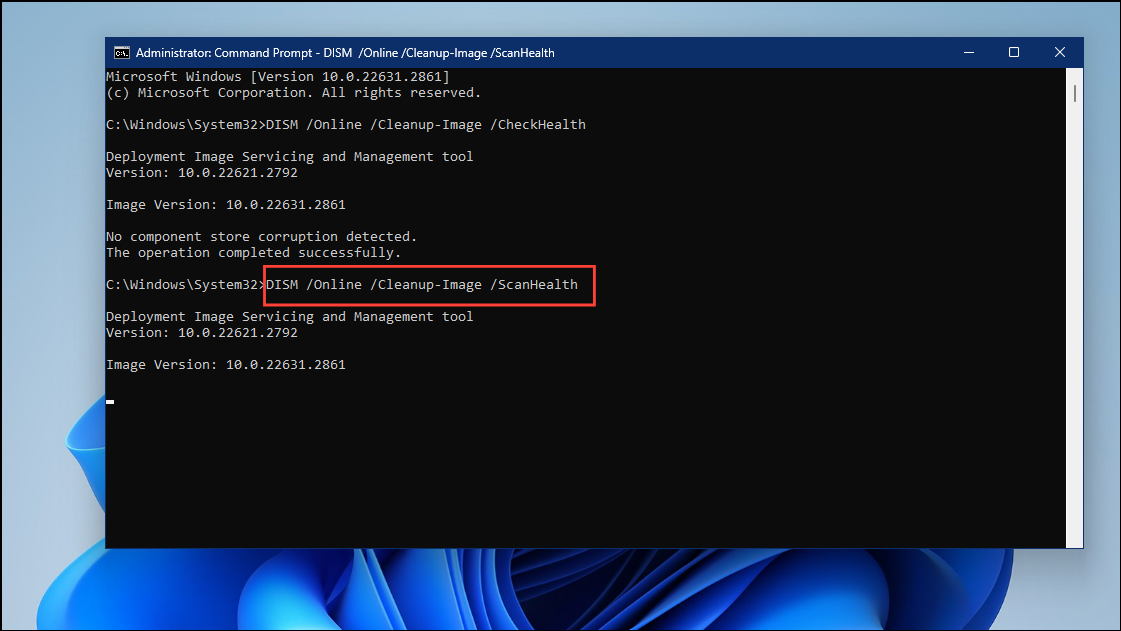
Step 5: Finally, type DISM /Online /Cleanup-Image /RestoreHealth and press Enter. Wait for the operation to finish.
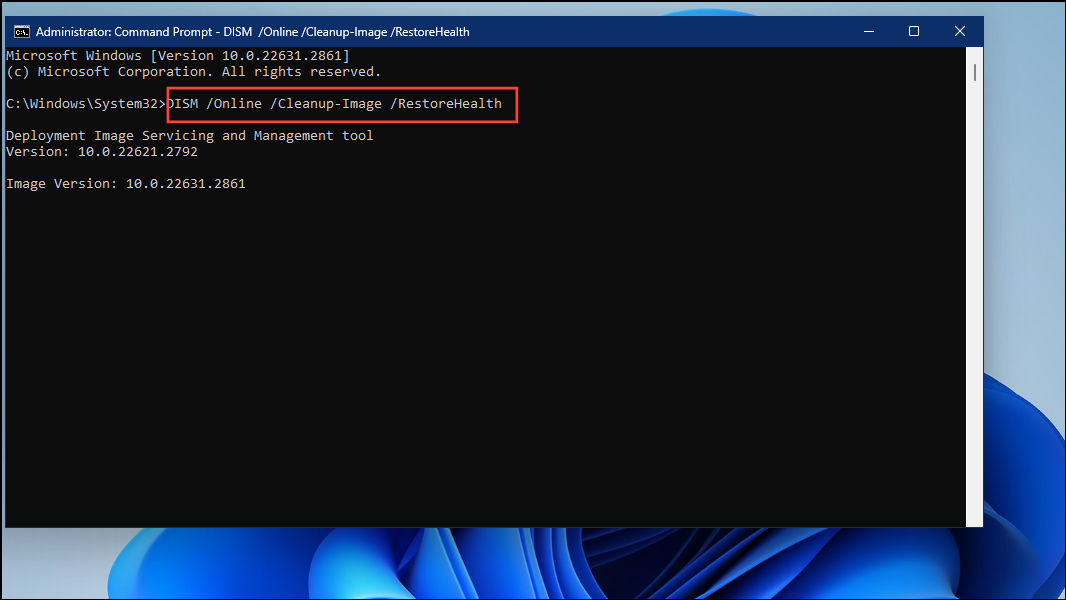
Step 6: Restart your computer and check if the issue persists.
4. Rebuild the icon cache
An outdated or corrupted icon cache can lead to missing icons on the taskbar. Rebuilding the icon cache forces Windows to recreate it, which can resolve the issue.
Step 1: Press Windows + E to open File Explorer. Click on 'View' at the top, hover over 'Show', and select 'Hidden items' to display hidden files and folders.
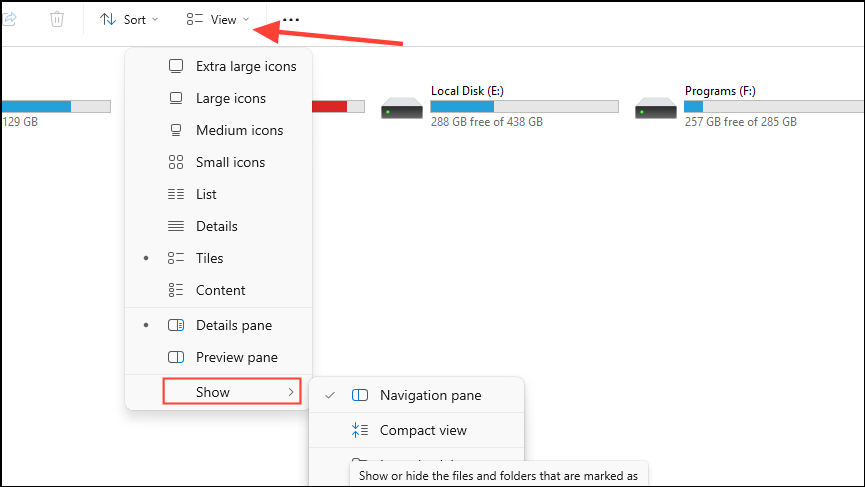

Step 2: Navigate to C:\Users\[YourUsername]\AppData\Local\Microsoft\Windows (replace '[YourUsername]' with your actual username).
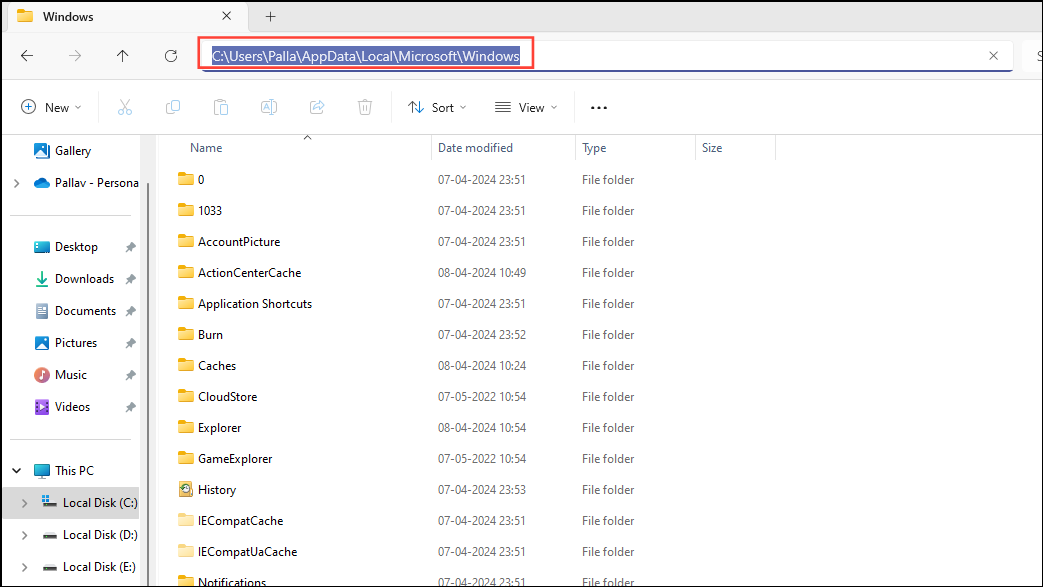
Step 3: Right-click on the 'Explorer' folder and select 'Open in Terminal'.
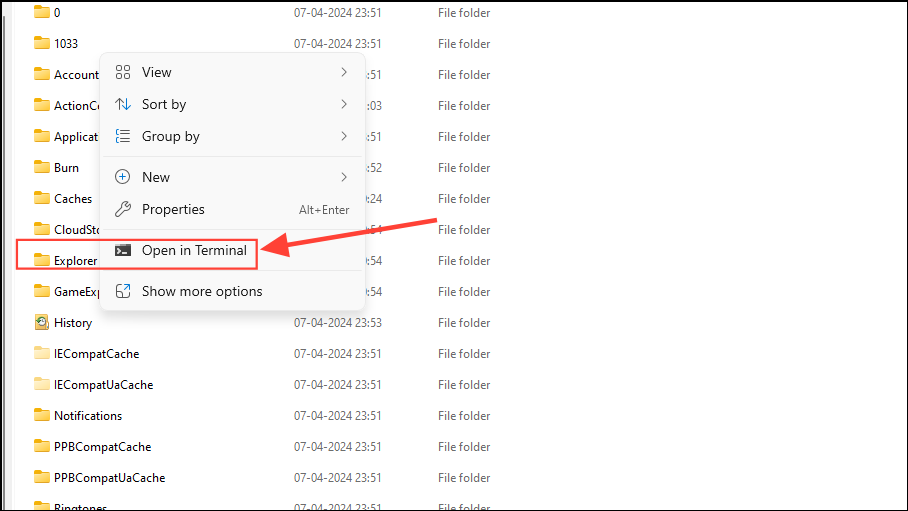
Step 4: In the terminal, type dir and press Enter to view the contents of the folder.
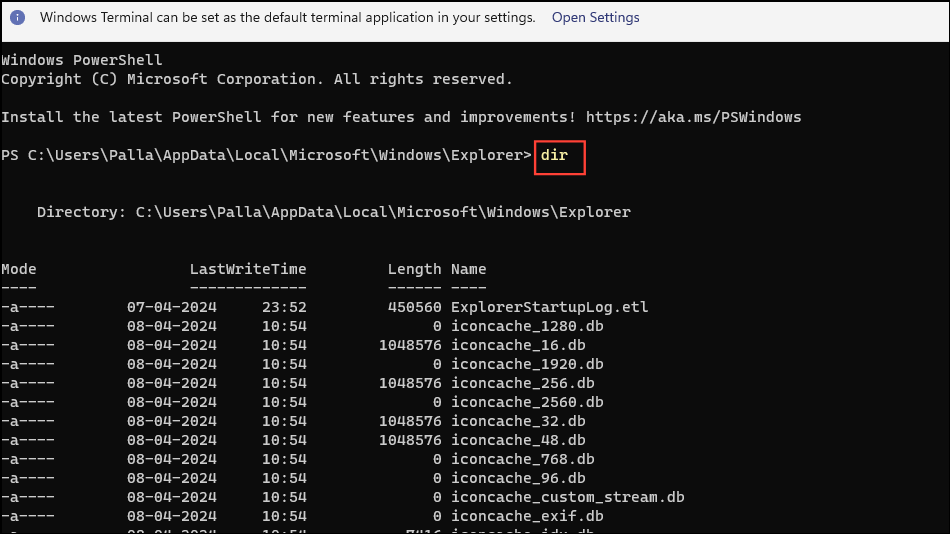
Step 5: Open Task Manager by pressing Ctrl + Shift + Esc. Find 'Windows Explorer' under the 'Processes' tab, right-click it, and select 'End task'. This will close File Explorer and your desktop icons may disappear.
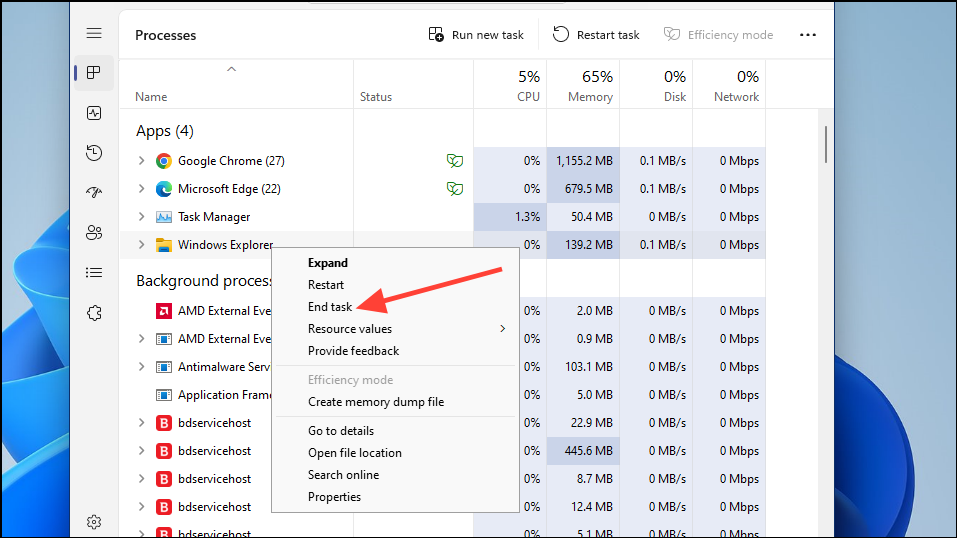
Step 6: Back in the terminal, type del iconcache* and press Enter to delete the icon cache files.

Step 7: Restart your computer. Windows will recreate the icon cache upon reboot, which may resolve the missing icons issue.
5. Repair Windows apps
Corrupted Windows apps can interfere with the taskbar and cause icons to disappear. Repairing these apps might help restore the icons.
Step 1: Open the Start menu, type 'PowerShell', right-click on 'Windows PowerShell', and select 'Run as administrator'.
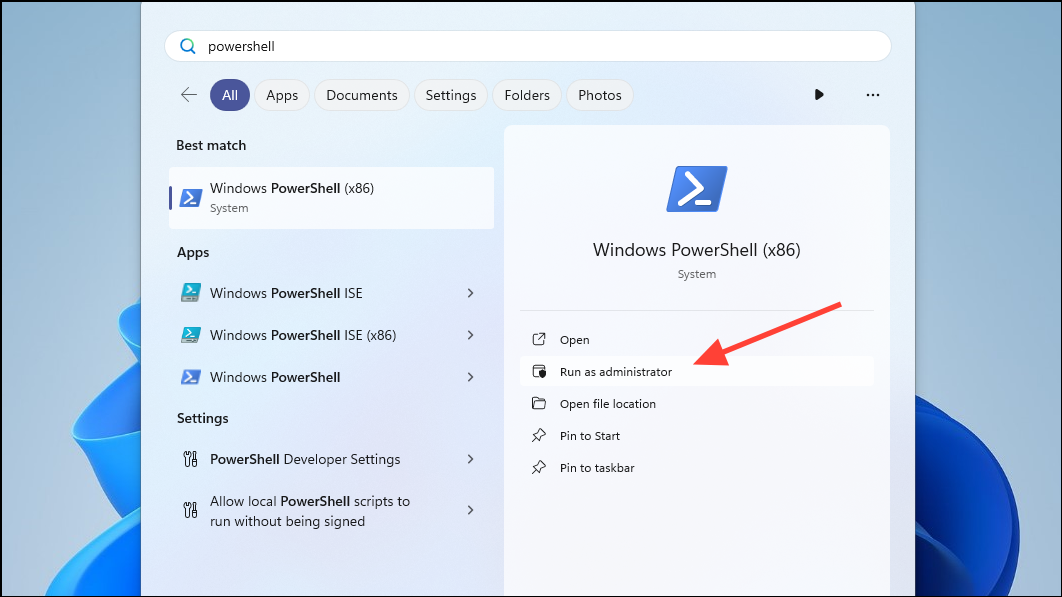
Step 2: In the PowerShell window, enter the following command and press Enter:
Get-AppxPackage Microsoft.Windows.ShellExperienceHost | foreach {Add-AppxPackage -register "$($_. InstallLocation)\appxmanifest.xml" -DisableDevelopmentMode}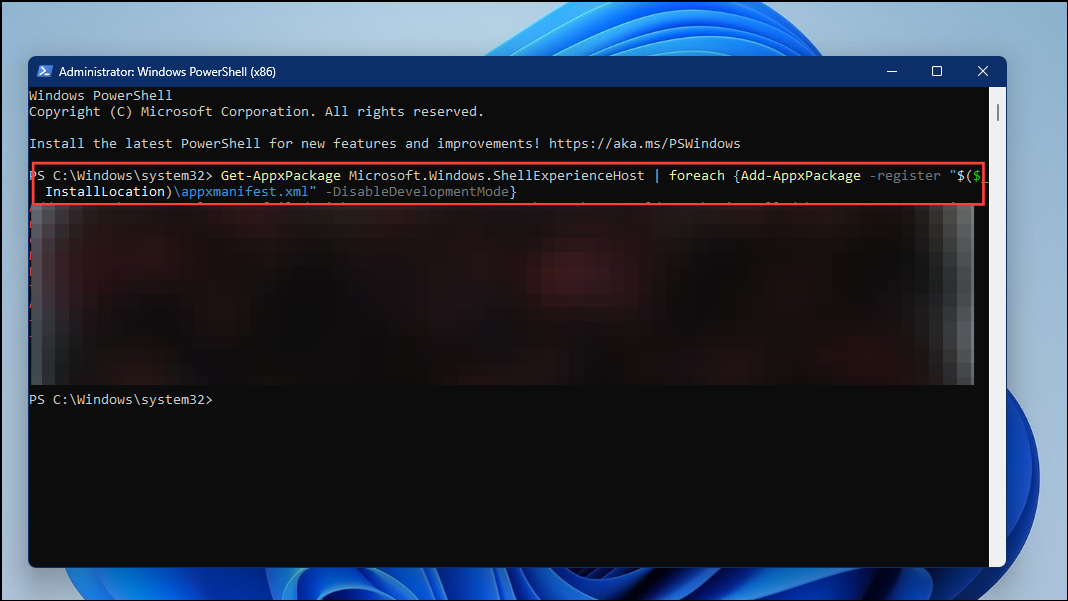
Step 3: Then, type this command and press Enter:
Get-AppXPackage | Foreach {Add-AppxPackage -DisableDevelopmentMode -Register "$($_. InstallLocation)\AppXManifest.xml"}
Step 4: Restart your computer and see if the taskbar icons have been restored.
6. Perform a clean boot
Third-party applications or services might conflict with the system and cause taskbar icons to disappear. Performing a clean boot helps identify if a background program is the culprit.
Step 1: Press Windows + R to open the Run dialog, type msconfig, and press Enter to open System Configuration.
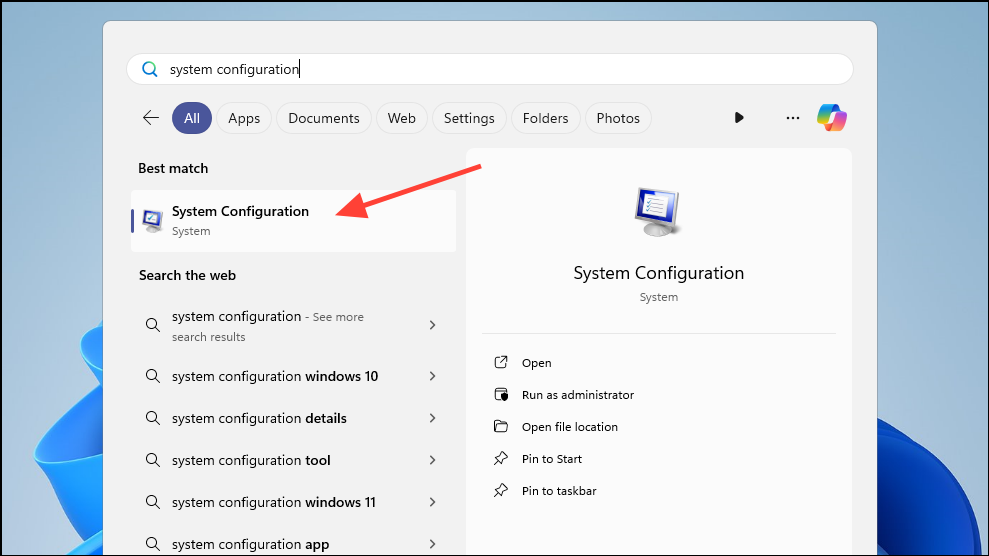
Step 2: In the System Configuration window, go to the 'Services' tab.
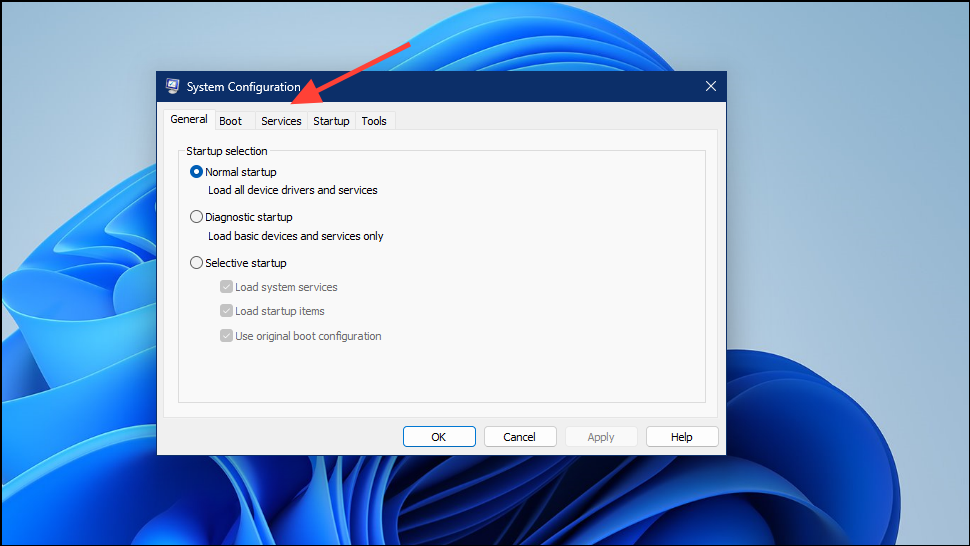
Step 3: Check the box for 'Hide all Microsoft services' to prevent essential Windows services from being disabled.
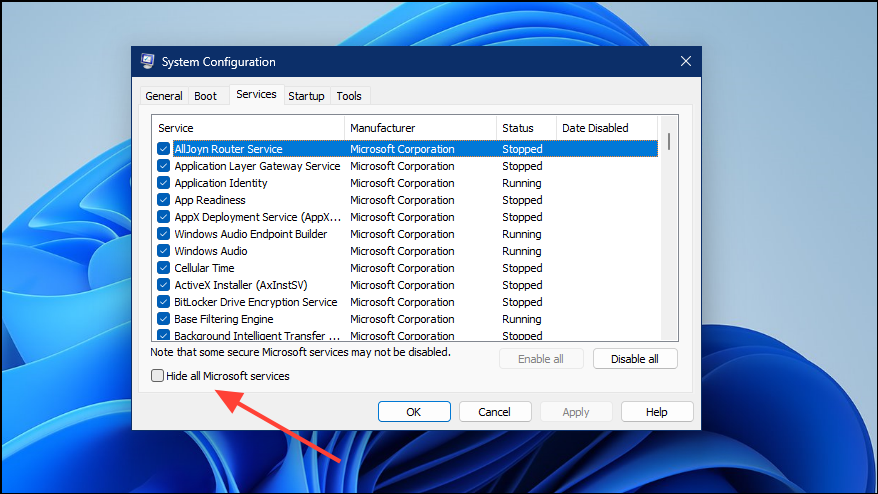
Step 4: Click on 'Disable all' to stop all remaining third-party services.
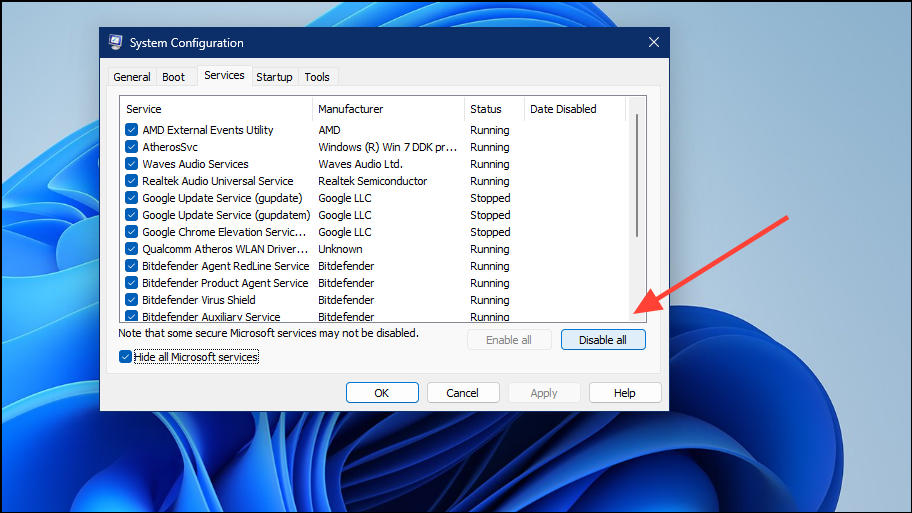
Step 5: Navigate to the 'Startup' tab and click on 'Open Task Manager'.

Step 6: In the Task Manager's 'Startup' tab, disable all startup programs by right-clicking each one and selecting 'Disable'.
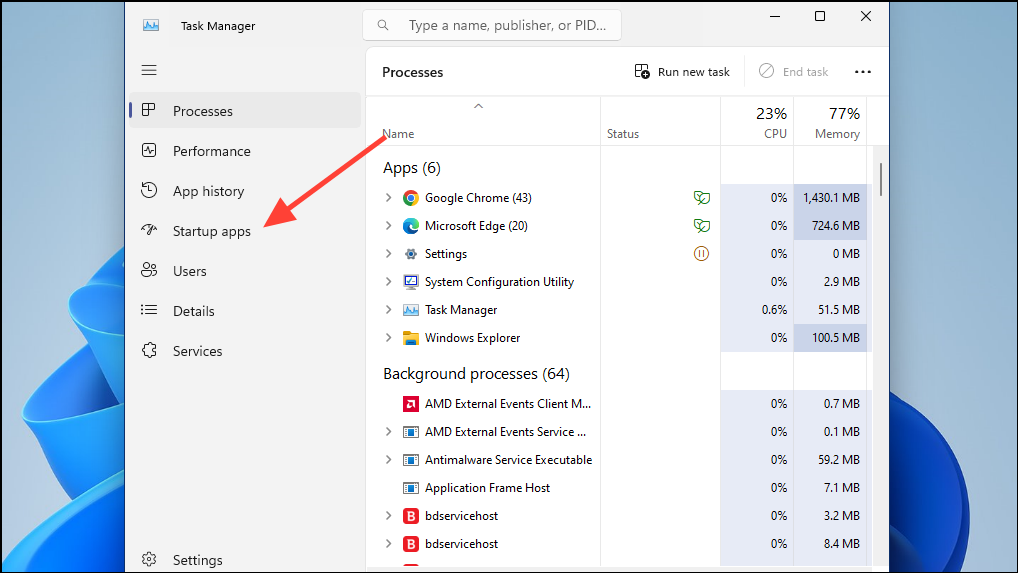

Step 7: Close Task Manager and click 'OK' in the System Configuration window. Restart your computer.
Step 8: After rebooting, check if the taskbar icons are visible. If they are, a third-party application is likely causing the issue. You can enable services and startup programs one by one to identify the problematic application and uninstall or update it accordingly.
7. Restart Windows components
Restarting certain Windows processes can help restore missing taskbar icons by refreshing related components.
Step 1: Open Task Manager by right-clicking the taskbar and selecting 'Task Manager', or by pressing Ctrl + Shift + Esc.
Step 2: Click on the three horizontal lines (hamburger menu) at the top to expand the navigation menu if it's minimized.
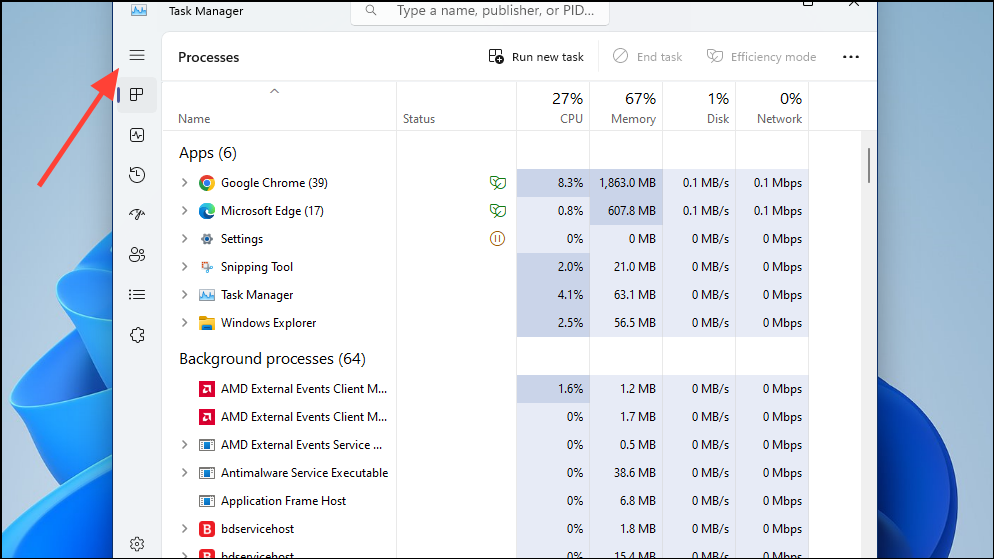
Step 3: Go to the 'Details' tab to see all running processes.

Step 4: Find 'SearchIndexer.exe', right-click on it, and select 'End task'. Repeat this for 'SearchHost.exe', 'ShellExperienceHost.exe', and 'RuntimeBroker.exe'.

Step 5: Switch to the 'Processes' tab.

Step 6: Locate 'Windows Explorer', right-click on it, and select 'Restart'.
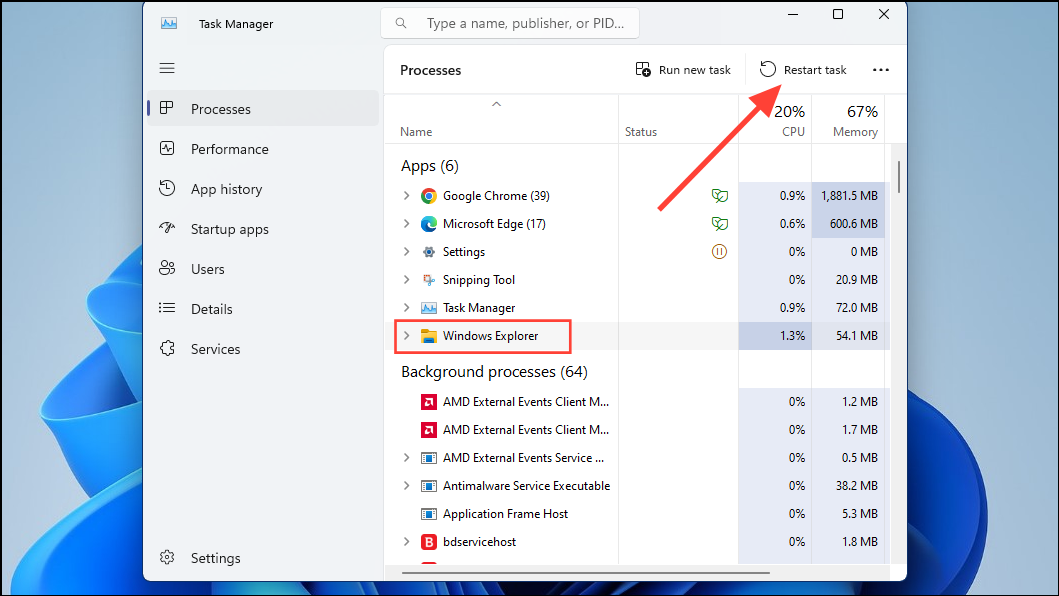
Step 7: Check if the taskbar icons have been restored.
8. Create a new local administrator account
If your user profile is corrupted, it may cause taskbar icons to go missing. Creating a new local administrator account can help determine if this is the case.
Step 1: Open 'Settings' by pressing Windows + I and select 'Accounts' from the left sidebar.

Step 2: Click on 'Other users' in the main pane.

Step 3: Click on 'Add account' to create a new user.
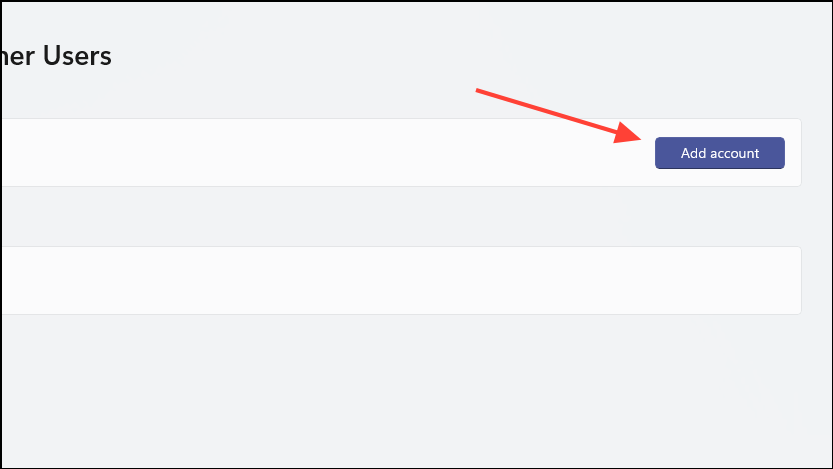
Step 4: In the Microsoft account sign-in window, select 'I don't have this person's sign-in information'.

Step 5: Choose 'Add a user without a Microsoft account' to create a local account.
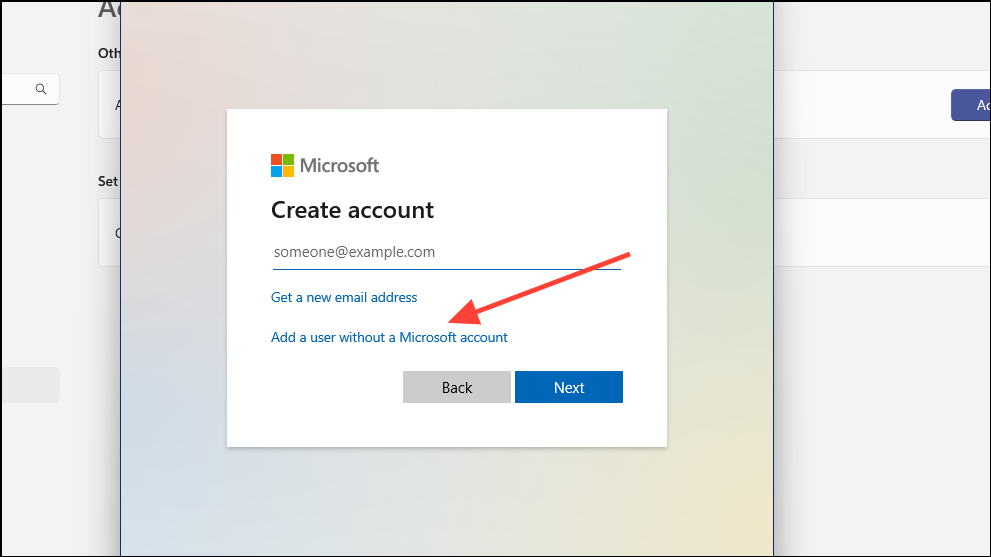
Step 6: Enter a username and password for the new account, along with security questions, then click 'Next'.
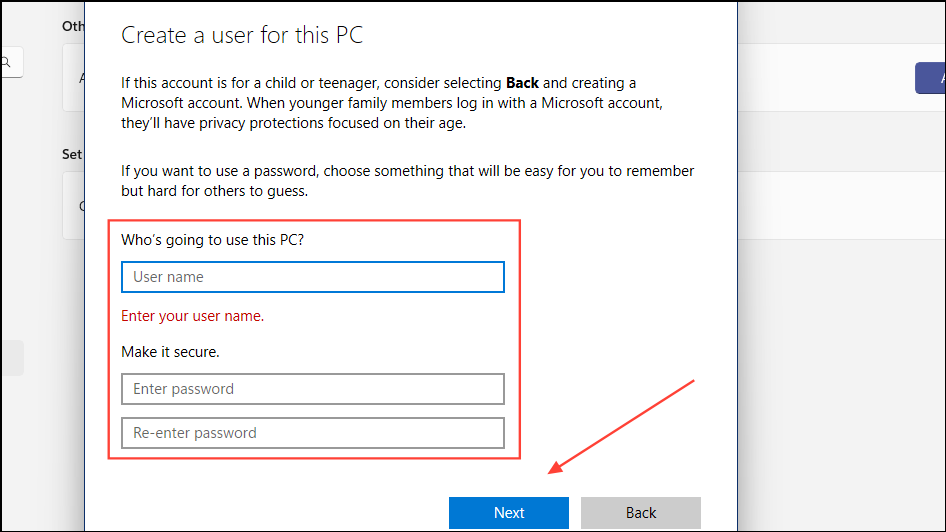
Step 7: To switch to the new account, open the Start menu, click on your user icon, and select the new account.
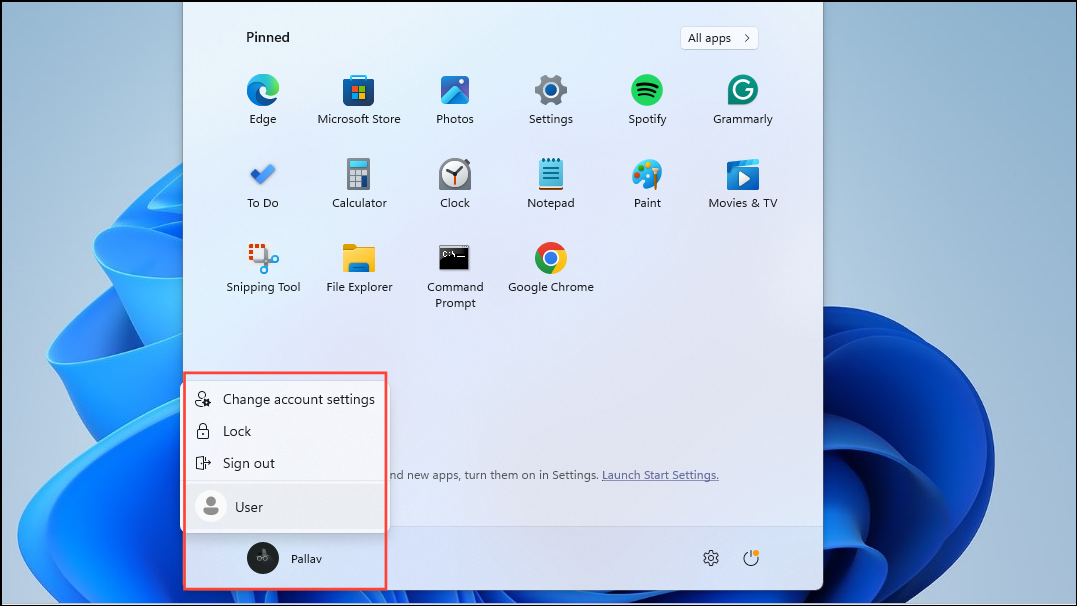
Step 8: Log in to the new account and check if the taskbar icons are present. If they are, the issue may be with your old user profile. You can transfer your files to the new account and use it as your main account.
9. Uninstall the latest Windows update
Sometimes, a recent Windows update might cause issues like missing taskbar icons. Uninstalling the latest update can help restore normal functionality.
Step 1: Open 'Settings' and select 'Windows Update' from the left sidebar.
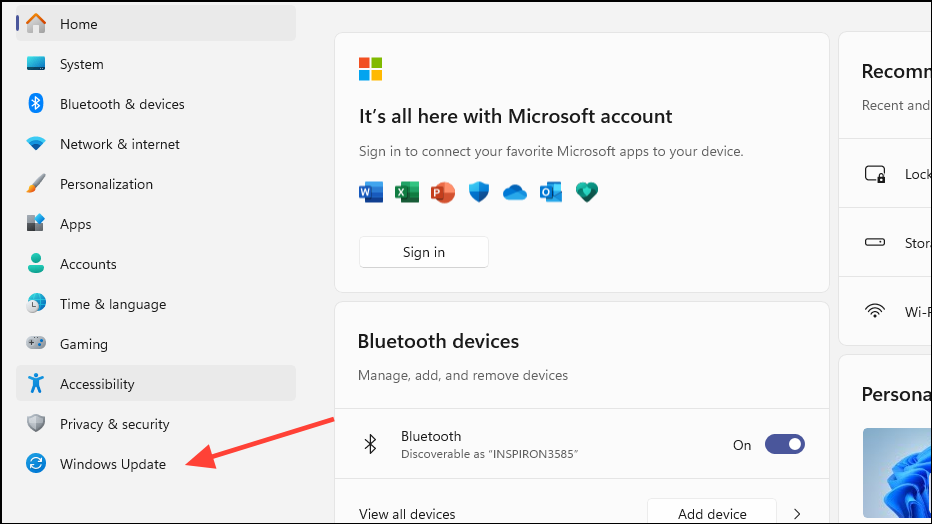
Step 2: Click on 'Update history'.

Step 3: Scroll down and click on 'Uninstall updates'.

Step 4: In the list of installed updates, select the most recent one and click 'Uninstall'. Confirm any prompts and restart your computer.

Step 5: Check if the taskbar icons have returned after the restart.
10. Enable and disable the 'Hide the taskbar' option
Sometimes, toggling the auto-hide feature of the taskbar can refresh its settings and restore missing icons.
Step 1: Open 'Settings' and select 'Personalization' from the left menu.
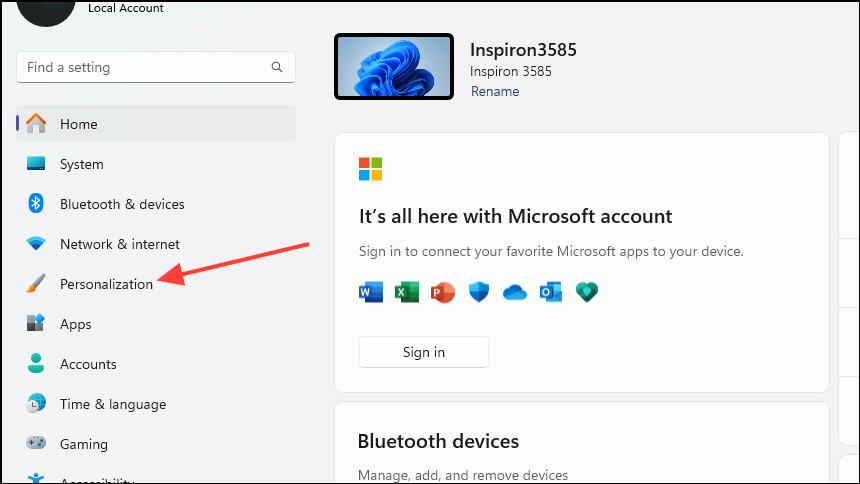
Step 2: Click on 'Taskbar' in the main pane.
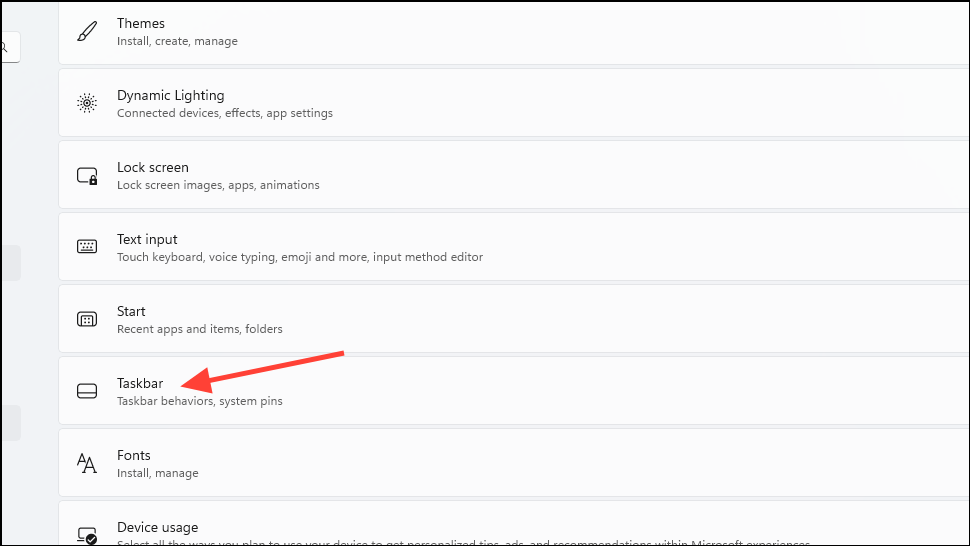
Step 3: Scroll down and expand 'Taskbar behaviors'.
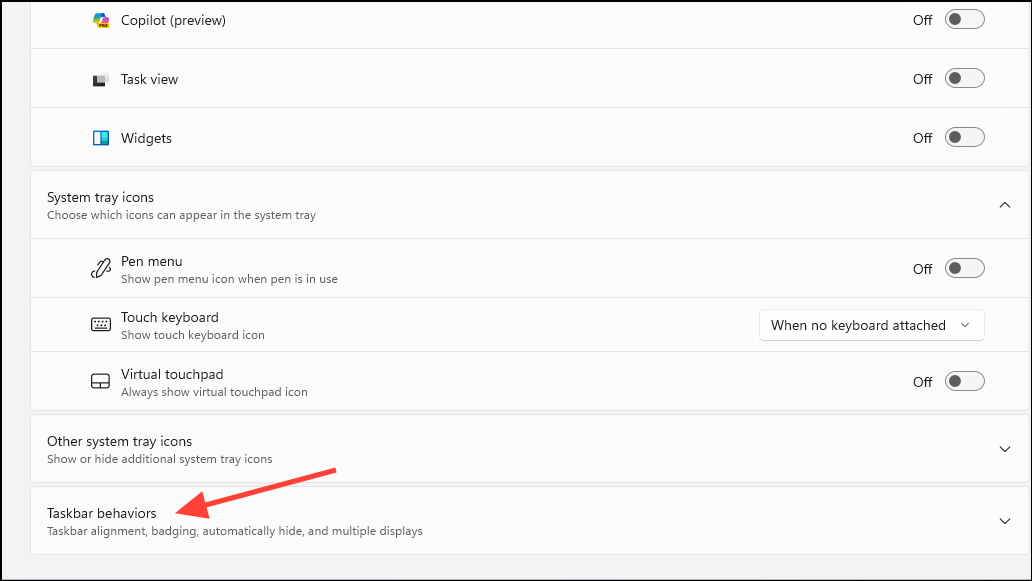
Step 4: Check the box for 'Automatically hide the taskbar', then uncheck it to disable the option.

Step 5: See if this action has restored the missing icons on your taskbar.
11. Delete taskbar icons
Deleting and recreating taskbar icons can sometimes resolve issues with them not displaying correctly.
Step 1: Open Notepad and paste the following commands:
DEL /F /S /Q /A "%AppData%\Microsoft\Internet Explorer\Quick Launch\User Pinned\TaskBar\*"
REG DELETE HKCU\Software\Microsoft\Windows\CurrentVersion\Explorer\Taskband /F
taskkill /f /im explorer.exe
start explorer.exe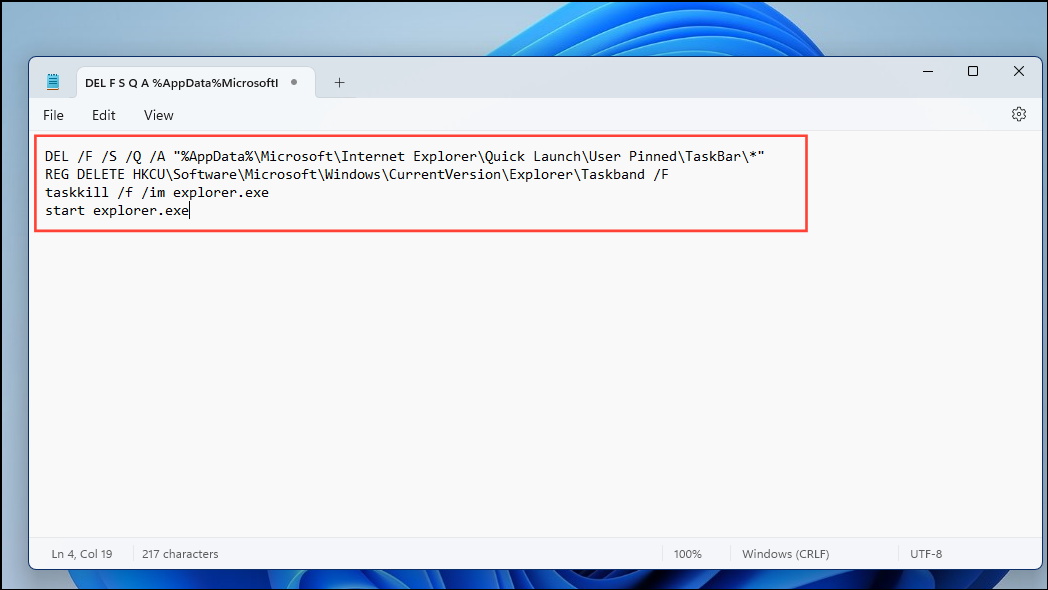
Step 2: Save the file with any name, but ensure you select 'All Files' in the 'Save as type' dropdown and add the extension .bat at the end (e.g., 'Taskbar.bat').
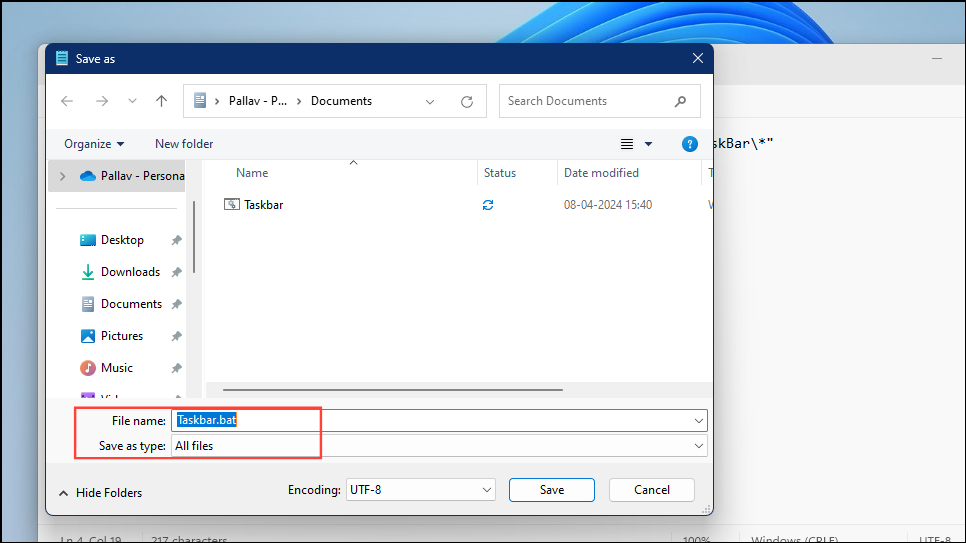
Step 3: Locate the saved batch file, right-click on it, and select 'Run as administrator'. A command prompt window will briefly appear, and your taskbar icons should refresh.
Step 4: If the icons do not reappear immediately, restart your computer.
By applying these methods, you should be able to restore the missing icons on your Windows 11 taskbar and improve your system's functionality.


